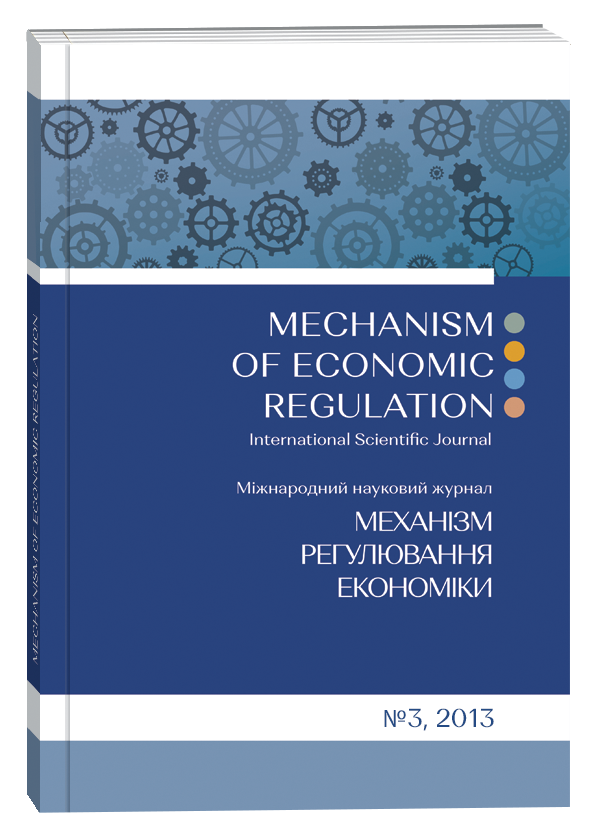ECO-INDUSTRIAL PARKS AS A TOOL OF WASTE MANAGEMENT SYSTEM
Abstract
Active use of natural resources without taking into account the ability of ecosystem to heal and cleanse itself caused the qualitative deterioration of natural capital and exacerbated the problem of harmonization of economic, social and environmental objectives of society. In developed countries, the problem of balancing of these aspects is solved by industrial symbiosis. However, Ukraine lacks the necessary conditions for the implementation of such projects. In this article the basic principles of creation and development of industrial symbiosis, particularly of eco-industrial parks, are examined. The experience of Kalundborg (Denmark) in the establishment of symbiotic relationships between enterprises is analyzed. The recommendations for creation of industrial symbiosis in Ukraine are developed.
References
Agarwal, A. Is Industrial Symbiosis only a Concept for Developed Countries? / A. Agarwal, P. Strachan // The Journal for Waste & Resource Management Professionals. – 2008. – № 42. – P. 42–43.
Chertow, M. Developing Industrial Ecosystems: Approaches, Cases, and Tools / M. Chertow, M. Portlock // New Haven : Yale School of Forestry & Environmental Studies Publication Series. – 2002. – № 106. – 460 p.
Ernest, A. Lowe. Eco-industrial Park Handbook for Asian Developing Countries [Електронний ресурс] / Lowe A. Ernest – Режим доступу : http://indigodev.com/ADBHBdownloads.html.
Ehrenfeld, J. Industrial Ecology in Practice: The Evolution of Interdependence at Kalundborg / J. Ehrenfeld, N. Gertler // Journal of Industrial Ecology. – 1997. – № 1. – P. 67–79.
Côté, R. P. Designing eco-industrial parks: a synthesis of some experiences / R. P. Côté, E. Cohen-Rosenthal // Journal of Cleaner Production. – 1998. – № 6. – P. 181–188.
Mirata, M. Industrial symbiosis networks and the contribution to environmental innovation : The case of the Landskrona Industrial Symbiosis Programme / M. Mirata, T. Emtairah // Journal of Cleaner Production. – 2005. – № 13. – P. 993–1002.
Eco-Industrial Park Workshop Proceedings [Електронний ресурс] – Режим доступу : http://clinton2.nara.gov/PCSD/Publications/Eco_Workshop.html#iv
South Korean EIP Initiative [Електронний ресурс] – Indigo Development. – Режим доступу : http://www.indigodev.com/korea_eip.html. (станом на 14.03.2013 р.)
Agarwal, A. and Strachan P. (2008), “Is Industrial Symbiosis only a Concept for Developed Countries?,” The Journal for Waste & Resource Management Professionals. № 42, 42–43.
Chertow, M. and Portlock, M. (2002), “Developing Industrial Ecosystems: Approaches, Cases, and Tools,” New Haven, Yale School of Forestry & Environmental Studies Publication Series, 106.
Ernest, A. Lowe, Eco-industrial Park Handbook for Asian Developing Countries, http://indigodev.com/ADBHBdownloads.html.
Ehrenfeld, J. (1997), “Industrial Ecology in Practice: The Evolution of Interdependence at Kalundborg,” Journal of Industrial Ecology, 1, 67–79.
Côté, R. P. and Cohen-Rosenthal, E. (1998), “Designing eco-industrial parks: a synthesis of some experiences,” Journal of Cleaner Production, 6, 181–188.
Mirata, M. and Emtairah, M. (2005), “Industrial symbiosis networks and the contribution to environmental innovation: The case of the Landskrona Industrial Symbiosis Programme,” Journal of Cleaner Production, 13, 993–1002.
Eco-Industrial Park Workshop Proceedings, http://clinton2.nara.gov/PCSD/Publications/Eco_Workshop.html.
South Korean EIP Initiative, http://www.indigodev.com/korea_eip.html.


